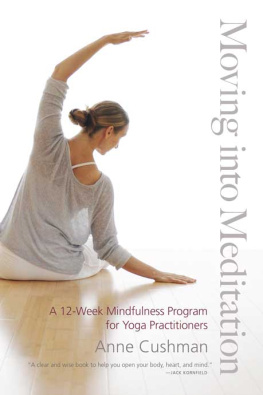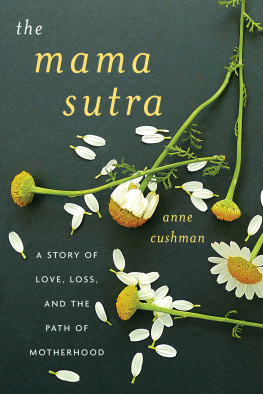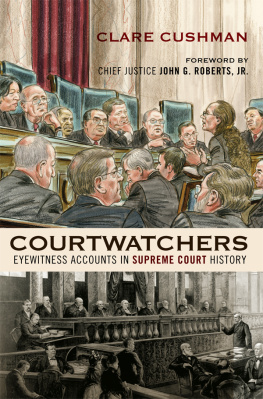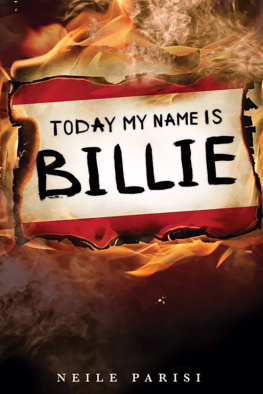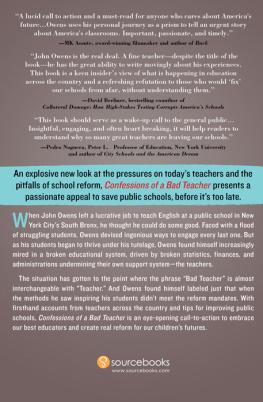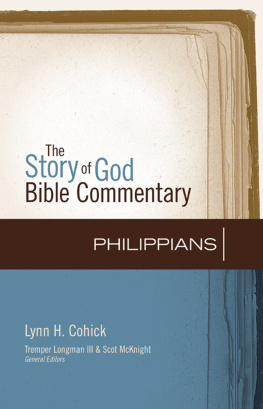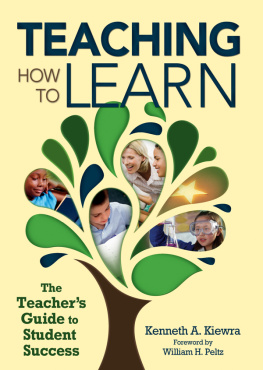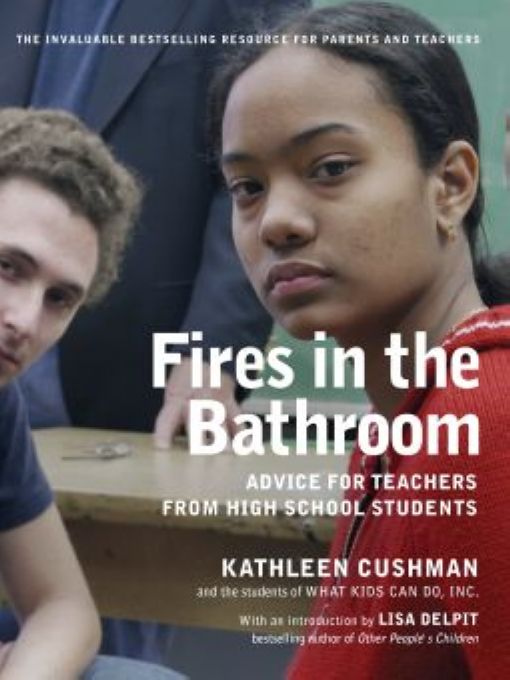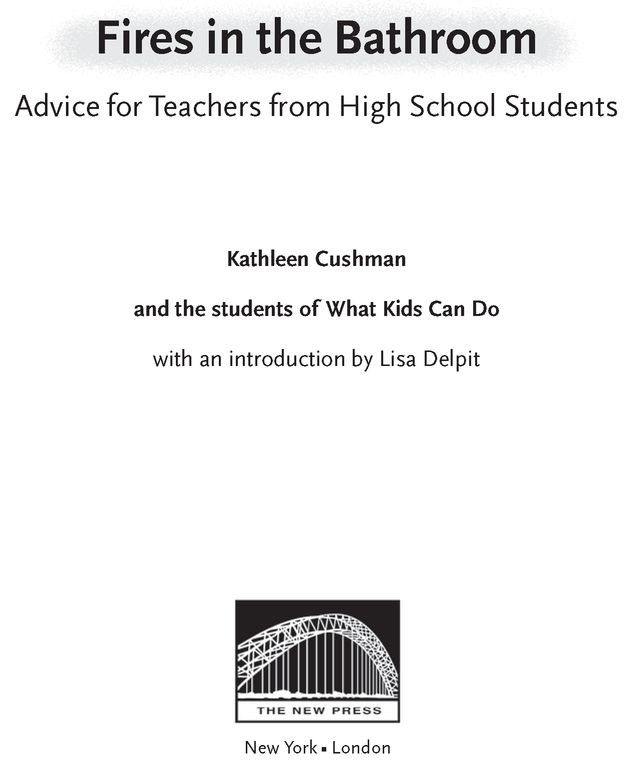Table of Contents
From the reviews of Fires in the Bathroom
In Fires in the Bathroom... students turn the tables on adults, and tell them how to do their jobs. - New York Times
An important book... a powerful critique of American teaching... Fires in the Bathroom should find a place in any professional development library... The student voices give its advice ... an authenticity and a sincerity that advice books for teachers often lack ... A powerful and compelling document ... A major contribution. - Teachers College Record
Fires in the Bathroom doles out practical advice ... [in] an unusual ... effort to tap the opinions of American high school students... Students get a rare opportunity to voice their opinions about what works and what doesnt. - Los Angeles Times
This book turns the student-teacher relationship upside down... Suggests ways to deepen the unspoken bond between students and teachers. - Chicago Tribune, Editors Choice
This chance to hear the authentic voice of students... should not be overlooked by anyone involved in teen education. - Publishers Weekly
Thoughtful and articulate... offer[s] insights about a range of school-related subjects, including classroom behavior, student motivation, and learning style. - Teacher Magazine
Fires in the Bathroom is a must for everyone concerned about our children and our schools ... A wealth of information that can be put to immediate use... Treat yourself to this powerful new tool!
- Connections Magazine
This book is dedicated
to all the students whose voices are still unheard
and all of those whose voices helped create it
Alexis
Andres
Barbara
Bosung
Brian
Cynthia
Daryl
Diana
Donnel
Elaine
Hilary
Jae Yoon
Javier
Jin Fen
Karen
Kirandeep
Krishneel
Latia
Lauraliz
Luciana
Luis
Mahogany
Marcos
Maribel
Mika
Montoya
Murilo
Nai
Nathan
Pedro
Porsche
Rafael
Sam
Sandy
Tiffany
Tsugumi
Vance
Veronica
Ximena
Yuri
Preface
AND THEN THEY SET FIRES IN THE BATHROOM,
WHILE SHE WAS TRYING TO BE SO FRIENDLY.
Its a safe bet that in random high schools all over the United States, some kid has just set the bathroom wastebasket on fire. And deep down, all of us know why.
Anyone who has made it out of their teens most likely remembers the feelings of anonymity and captivity that even the best high schools can convey. Whether in huge urban warehouses, sprawling suburban campuses, or newly consolidated rural schools, teachers with more than 125 students a day cant help but focus the majority of their attention on only the most urgent cases.
In such settings, order trumps most other institutional aims. To keep the place running smoothly, students behavior becomes more important than their understanding, acquiescence more valued than inquiry. In pursuit of order, school and classroom rules routinely supplant the disarray of kids questions, objections, suggestions, and problems. High school becomes something done to kids, not by kids. This is the way it works; this is the way it has always worked.
Against this backdrop, the voices of the students who helped write this book took on even more importance to What Kids Can Do, Inc. (WKCD), the new nonprofit organization that asked me to gather teenagers advice for an audience of teachers and the public. Based in Providence, Rhode Island, WKCD researches and makes public the work and learning of adolescents around the United States via its website and also through networks of others who care about or work with youth. For this book project, WKCD won support from MetLife Foundation, whose Supporting New Teachers Initiative recognizes how much new teachers could learn from studentsif only given the chance.
With two million new teachers needed over the next decade and 60 percent of beginning teachers quitting the profession within their first five years, advice from the classroom could not be more important. Research shows that too many schools across the country suffer from a persistent divide, one pitting teachers and students against each other. In a 2001 national survey, 65 percent of students agreed with the statement, My teachers dont understand me, and 33 percent of the teachers reported inadequate preparation to reach students with backgrounds different from their own.
In this climate, I set out to collect what would become sheaves of interviews and writing from forty students in New York City, Providence, and the San Francisco Bay Area. Through school connections made during years of education writing, I found ordinary students who reflected the faces and backgrounds of their diverse student populations. Some had moved from typical big-city schools into small schools; others had dropped out altogether before returning to class. Several performed well academically, but many struggled. Twenty were recent immigrants, English-language learners in a special class at a large California high school. Another half dozen spoke no English at home but took regular classes at school. Whenever I found students who agreed to participate, I asked whether they could interest a friend in coming, too.
Except for the class of English-language learners, we met in small groups of three to five students, usually on weekends and during school vacations. Each group worked for at least three sessions of three to five hours, and we paid students for their time at an hourly rate comparable to that of undergraduate research assistants.
From their short biographies (pages 197 to 199) and their words throughout this book, a vivid mosaic emerges of the individual narratives these students brought to our discussions, debate, and analysis. As diverse a group in ethnicity and academic record as their schoolmates in the cities where they live, these young messengers realize well that most of their teachers do not share their background. Their advice also recognizes the differences among themselves: Every high school student is unique, making the teachers job even harder.
Yet strikingly, their daily encounters with teachers ring true across the boardnot just for students of color and language minorities like themselves, but equally for their more privileged peers. As they trade wisdom on how to navigate high school, they invariably strike the same chords kids everywhere sound when they let down their guard to recount their school experiences.
Socially, kids hate you if you succeed too much, observes Mika, whose strict Jamaican parents demand the highest achievement from her. Its like: Shut up! Why do you have to rub it in my face that you know and I dont! I didnt learn that until it was too late, and then I completely shut up in class. Alexis, who has shuttled through three New York City high schools, elaborates: Intimidation is the key. Teenagers care about what other people think of them, and so they feel intimidated.
They speak of their need to be known well but to maintain boundaries and privacy. They crave respect from adults, feeling retaliatory rage when humiliated or ignored. Kids want to learn, in one Harlem students words, and they hunger for the power to shape their own futures. They know their lives are in flux, and when things go wrong, they want someone to help without shaming them. As Alexis points out, Teachers need to make allowance for the fact that we change from year to year and even from week to week.



